Horses. We’ve seen them race, we’ve watched them act in movies, and we’ve witnessed them prancing around like four-legged ballerinas. Surely these beautiful, graceful animals wouldn’t be able to perform such impressive feats if they were stupid?
The fact of the matter is that horses are pretty smart. The question is, just how smart are they?
In today’s article, we’ll be discussing what science has discovered about equine brilliance. So let’s get right into it!
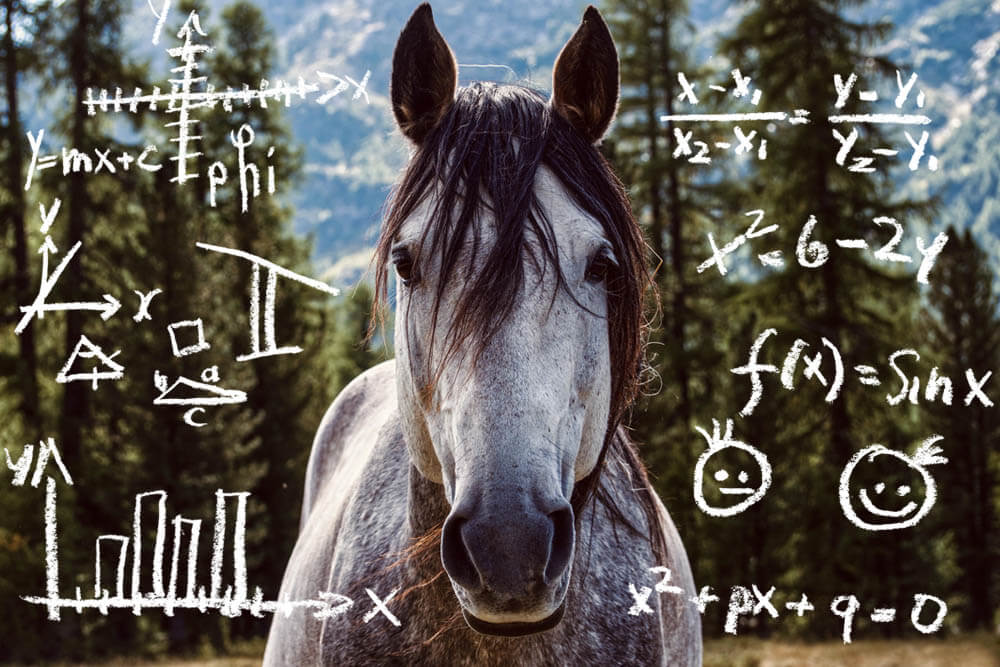
How Smart Are Horses? Here’s What The Science Says!
Scientists have been studying horse intelligence for a while, which has allowed them to learn a lot about our equine friends. For starters, we now know that the intelligence of these amazing creatures is similar to a three-year-old human’s.
Below, we discuss what other fascinating observations researchers have made about horse cleverness.
1. Horses can communicate
Horses “talk” to each other and to humans using sounds (such as grunting and braying) and behaviors (such as biting, kicking, and trampling their feet).
Communication is important to horses as they’re pack animals. In the wild, they convey information to one another in their attempts to establish herd hierarchy. They also warn each other of potential dangers, such as predators on the prowl, new horses approaching to challenge them, or a storm on its way to their location.
Domesticated horses communicate to their human keepers in the same way.
But what, exactly, do horses tell us?
They communicate their wants and needs
A Japanese study examined eight domesticated horses and discovered that these animals can and do convey their problems to their human owners.
In this study, a researcher’s assistant put a carrot in a bucket. They showed the bucket to a horse, then placed said bucket where only they had access to it. The horse didn’t like this one bit! So the horse used tactile and visual communication techniques to inform the assistant that it wanted them to bring the carrot to it.
This shows us that horses can communicate their wants and needs to us.
They communicate their emotions
Horses can also let us know how they’re feeling through vocalizations and body language.
When a horse feels happy or calm, it’ll snort. The more often it snorts, the greater the comfort it feels. In a French study, three groups of horses were put in different scenarios. While two groups were kept in stalls, the third was released to freely roam a pasture. Because this third group was in a positive environment that allowed its members to socialize with one another, the horses snorted more often than those in the stalls.
Once the other horses were released from their stalls to roam the pasture as well, they started snorting twice as frequently.
Horses also whinny to disclose to us various intensities of positive and negative emotional states. Nuances in the whinny can indicate different feelings. For instance, positive emotions typically produce whinnies with lower, shorter frequencies. On the other hand, negative emotions produce higher, more extended frequencies.
This ability to display emotions in a way we can understand is what allows horses to develop a deeper bond with their human owners.
2. Horses can be trained
Just like dogs, horses can be trained to obey commands and even do tricks – we have decades of horse-related sporting events and exhibitions to prove this.
Horses typically learn from four types of training methods, namely operant conditioning, Pavlovian conditioning, desensitization, and habituation.
Operant conditioning is among the most effective ways to train a horse. This is the use of positive reinforcement to encourage the repetition of desired behaviors. For example, to make a horse nod its head on command, you can give it a treat every time it nods its head following your command. Eventually, it will associate nodding when instructed to do so with getting a reward, thus encouraging it to repeat the behavior every time you tell it to nod its head.
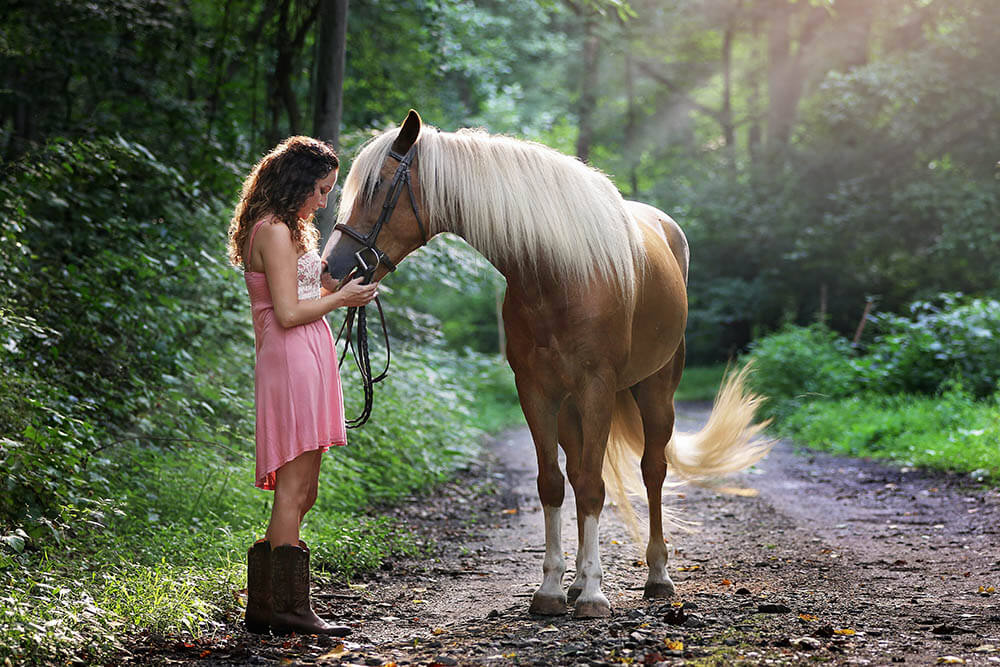
3. Horses can understand and use symbols to communicate
In 2016, a Norwegian study famously dubbed the “Blanket/No Blanket Study” demonstrated that horses can be trained to understand symbols, then use those symbols to tell us what they want from us.
The researchers trained 23 horses to use symbols to tell people whether or not they wanted a blanket. There were only three symbols: a horizontal bar to signify “wear the blanket”; a vertical bar to signify “remove the blanket”; and an empty white board to signify “no change.”
Every time, the horses successfully pointed to the right symbol to tell the researchers when they wanted to wear a blanket, when they wanted a blanket removed, or when they wanted to keep wearing a blanket.
4. Horses can make choices to suit their needs
The “Blanket/No Blanket Study” discussed above shows that horses can be trained to use symbols to communicate their needs. The other fascinating detail this study presents is that horses can make choices so that their needs can be met.
Specifically, the horses signaled to the researchers that they wanted to wear a blanket when the weather was cold and that they wanted their blanket removed when the weather was warm. They also preferred keeping the blanket on when there was no change in the cold weather.
This suggests that horse behavior isn’t random – these creatures know what they’re doing and make decisions based on their requirements.
5. Horses have a great memory
In yet another Japanese study, researchers demonstrated that horses are blessed with an excellent memory.
The research team gave horses access to 42-inch touchscreen televisions, then taught those horses the meanings of various shapes appearing on the screen. Said team also trained the horses to understand that, when presented with specific shapes, they’d be rewarded with a treat.
After training, the team tested its equine subjects to see if they could 1) remember which shapes would get them rewarded with treats, and 2) communicate their needs to the team by touching the appropriate shapes on the screen. The horses had no trouble distinguishing between ordinary shapes and those that would get them treats, touching the shapes associated with food every time.
Horses also have a great memory of the people they’ve interacted with and can recall human faces. In one study, for example, female horses were able to identify their keeper, whom they hadn’t seen in six months, from a photograph. If you’ve been good to a horse, they’ll remember that and welcome you warmly. If you’ve been bad, they’ll also remember, and respond with fear and suspicion.
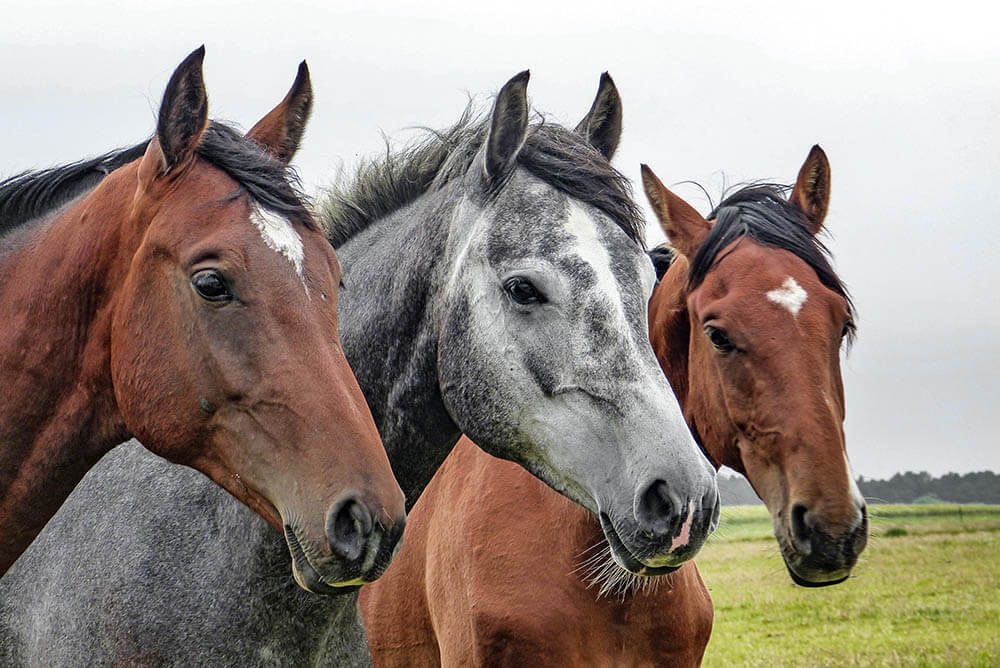
6. Horses have emotional intelligence
Many who’ve handled horses know that when a person is having a rough day, their horse will not only know but also approach its human to provide them with comfort. However, science can now support such anecdotal evidence, as researchers have found that horses are emotionally intelligent animals capable of reading emotional cues from the facial expressions we make.
In a University of Sussex study, researchers showed photos of angry human faces to 28 horses, then observed that these horses experienced more stressed-related behaviors and elevated heart rates. Additionally, the horses tended to turn their head to look at the photos using their left eye – a behavior that has been observed in various animals when faced with a stress-inducing situation.
In contrast, photos of happy faces produced far milder reactions in the horses.
Horses can also read the body language of humans, allowing them to distinguish between dominant and submissive body postures even if they have no familiarity with an individual.
This suggests that horses can perceive our moods from our facial expressions and behaviors, which is why they’re more relaxed around us when we look content and warier when we look unhappy.
7. Horses have spatial intelligence
Spatial intelligence is the awareness and understanding of one’s surroundings.
Horses have spatial intelligence, which lets them know their relation to their environment. Because of this, you won’t find them walking into walls or jumping into ravines — they recognize that such things exist, take up space, have specific locations, and can result in consequences if interacted with.
Researchers tested 26 horses to see if they could find their way around obstacles of varying symmetry and asymmetry. All the horses successfully navigated their way around the barriers, but their approach varied.
Some horses, for instance, took their time but chose the shortest, more accurate route to the end of the obstacle course. Others moved more rapidly but didn’t pick the shortest way. The remaining horses were faster when the barriers were symmetric but slower and more accurate when the barriers were asymmetric. The asymmetric obstacles also reduced the variability of the horses’ heart rates, suggesting they found it more mentally demanding.
This indicates that horses are similar to people in that they have different cognitive styles and capabilities.
8. Horses have unique personalities
Horses have been observed to have unique personality traits, with the main traits being aloof, social, fearful, and challenging. These traits aren’t negative, but they do help keepers analyze a horse’s behavior and figure out the most ideal way to handle it.
For instance, a social horse may readily welcome any form of interaction with a human or another horse. On the other hand, an owner will need to be more patient when handling a fearful horse. A horse that’s aloof may have trouble tolerating poor handling. A challenging horse may take advantage of unsure or timid handlers.
Horses are social creatures; as such, they require relationships to be happy and thrive in groups. Without any social interaction, they become lonely just like humans.
As pack animals, wild horses stick with family members to form a herd. Each herd is typically composed of between one and two stallions, a number of mares, and their offspring. The oldest and most experienced mare leads the herd through physical intimidation and attitude.
Once the offspring mature, they separate from the herd to form new herds. Colts (young male horses) form herds with other colts until they can establish a harem. Fillies (young female horses) remain with their family, join a new herd, or begin a new herd with a bachelor stallion.
Domesticated horses also need companionship. People can help satisfy this need by spending time with them, such as through play or grooming.
10. Horses can sense time
Horses can’t read clocks as we can, but they do have some understanding of what time it is.
For instance, if you have fixed times for feeding your horse and letting it out of its stall, it will eventually learn your schedule. It’ll know when it’s time to eat or have fun and will thus anticipate your arrival in anticipation of their needs being met.
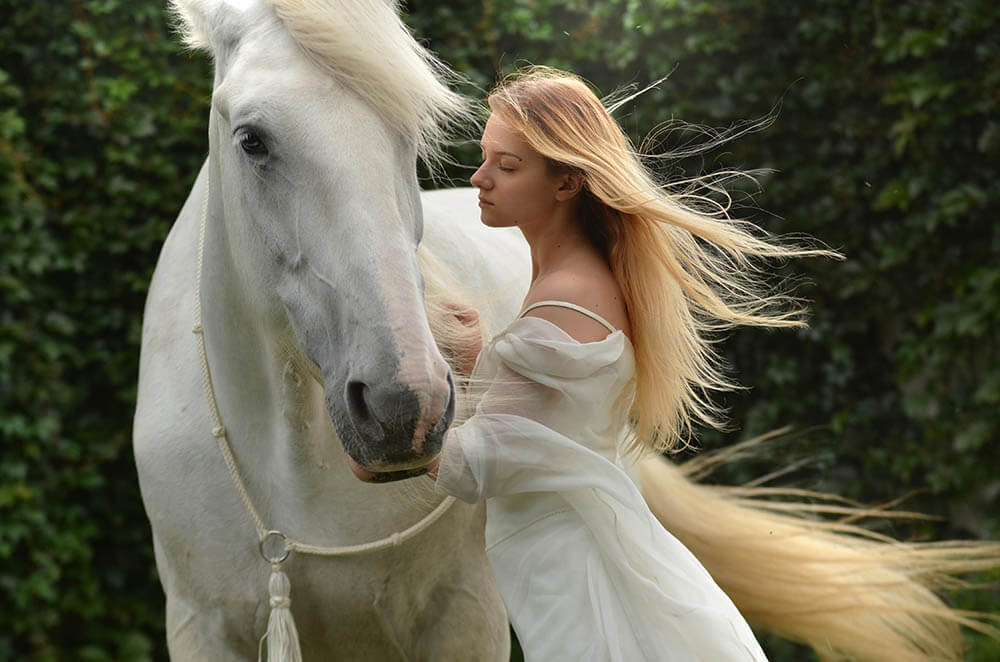
The Mirror Test
One other way to measure animal intelligence is by observing how they react when they see their reflection in the mirror. Since the 1970s, scientists have been using this mirror self-recognition (MSR) test to help figure out how smart animals are.
The MSR test involves putting an animal before a mirror. If the creature recognizes itself in its reflection, then it has passed the test. In some variations of the test, a mark is placed on the animal; if it tries to remove the mark using its reflection to guide its movements, then that’s further proof of self-recognition.
The animal kingdom’s smartest species all pass the MSR test. In addition to humans, this includes killer whales, chimpanzees, and elephants. Surprisingly, pigeons, magpies, and even ants also pass this test.
In contrast, animals like dogs and cats don’t pass the MSR test.
In a 2017 pilot study, horses didn’t pass the MSR test either, though the scientists did make some interesting discoveries. For one thing, all the horses involved in the study spent a lot of time interacting with the mirror, investigating the mirror itself and the image reflected on its surface.
Most surprising of all was that one horse did pass the test. This isn’t conclusive proof that horses recognize themselves in the mirror, however; additional studies need to be conducted to examine the matter further. Also, this study suggests that, like people, horses vary when it comes to intelligence. Perhaps that one horse that passed the MSR test was far smarter than the rest in its group?
How Smart Are Horses Compared to Other Animals?
So we’ve established that horses are clever creatures. The question is, how smart are they compared to other animals?
Horse intelligence is comparable to canine and feline intelligence. As dogs and cats are predators, however, their skillsets vary greatly from horses’. For instance, while dogs and horses learn new things quickly, dogs are better at solving problems than horses. This is likely because we bred dogs to help humans in various tasks, which has generally made them more intelligent.
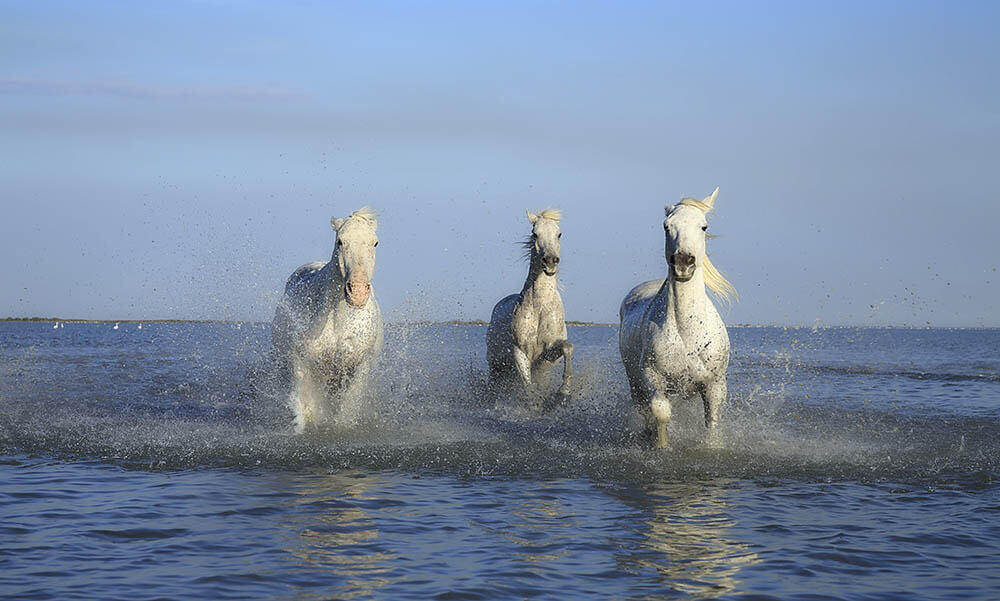
Conclusion
Horses are clever animals! Sure, they didn’t quite ace the mirror self-recognition test, but they’ve got other abilities to brag about.
They can communicate their needs and emotions. They can learn through training and make choices to suit their needs. Their memory and spatial awareness are impressive. And these are but some of the remarkable feats of intelligence our equine friends are capable of.
We hope this article has answered your question about horse intelligence!
